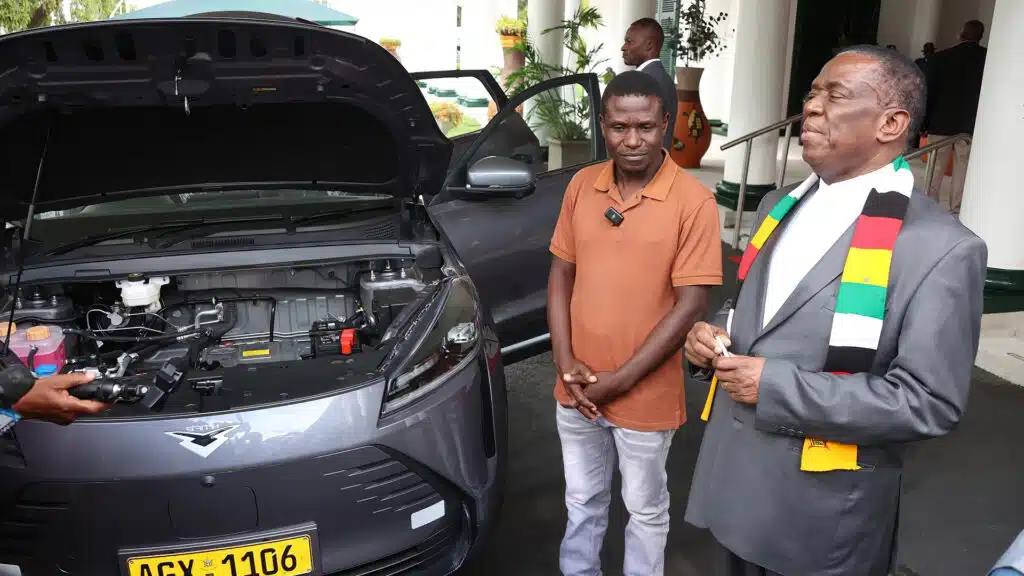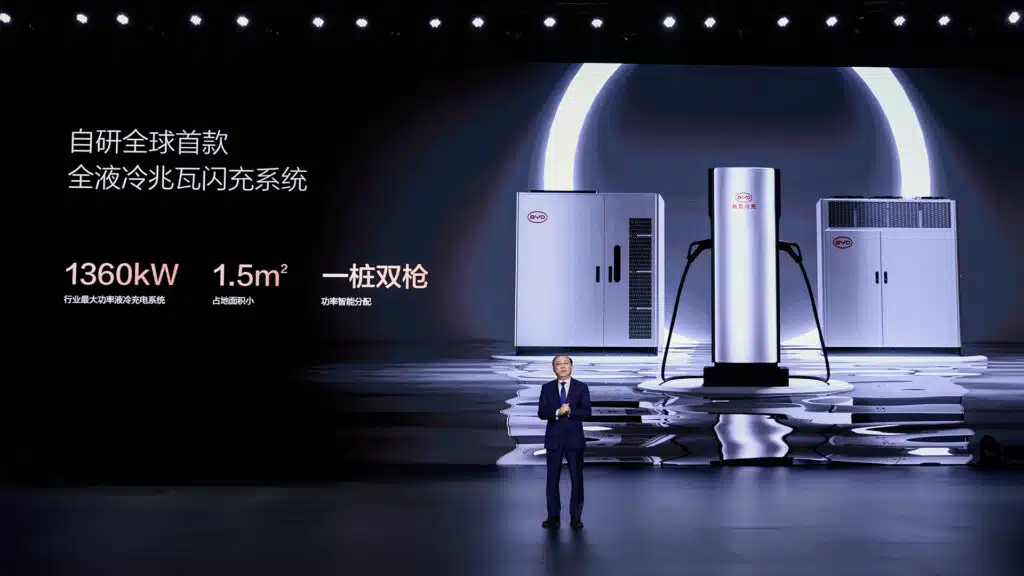Zimbabwean inventor Maxwell Chikumbutso, of Saith Group, has introduced what could be one of the most revolutionary advancements in electric vehicle (EV) technology—a self-powering electric vehicle (SPEV) that operates entirely on radio waves.
This unprecedented innovation challenges conventional physics and the traditional limitations of battery-powered EVs, potentially redefining the future of sustainable transportation.
In a recent demonstration at the State House in Harare, Chikumbutso showcased the vehicle to President Emmerson Mnangagwa, highlighting its ability to generate continuous energy without external charging. His innovation extends beyond cars to motorbikes, drones, and home energy solutions, presenting an ambitious technological breakthrough that could disrupt the global automotive industry.
Highlights
- First-of-its-Kind EV Technology – Chikumbutso’s self-powering electric vehicle runs on radio waves, eliminating the need for traditional battery charging infrastructure.
- Multi-Use Energy System – The vehicle doubles as a moving generator, capable of powering homes with up to 15kW of energy.
- Potential Impact on the EV Market – If scalable, this technology could outperform traditional EVs, reducing dependence on lithium-ion batteries and charging stations.
- International Recognition and Challenges – Chikumbutso has reportedly declined multi-million-dollar offers from the U.S. to keep his invention in Zimbabwe.
- Collaboration with China – He is working with a Chinese firm to establish a production plant in Zimbabwe, positioning the country as a potential hub for next-generation EV manufacturing.
Breaking the Boundaries of Physics: How Does It Work?
Chikumbutso claims his self-powering EV harnesses energy from radio waves, a concept that has long been debated in the scientific community. The traditional laws of thermodynamics suggest that energy cannot be created from nothing, which is why many experts remain skeptical of this development.
However, Chikumbutso asserts that his invention is based on a proprietary energy system that allows the vehicle’s battery to continuously recharge itself, making external power sources obsolete.
“This vehicle is powered entirely by radio waves and violates the known laws of energy in thermodynamics,” Chikumbutso stated.
Key Technical Specifications:
- 160 kW electric motor – Provides a powerful 320–380 Nm of torque, making the vehicle as fast as modern battery-powered EVs.
- 15 kW home power generation – When parked, the vehicle can supply power to homes, reducing reliance on the national grid.
- No need for charging stations – The SPEV completely eliminates the need for traditional EV infrastructure, such as charging networks and battery replacements.
The Global Impact: Disrupting the EV Industry
The global EV market, led by companies like Tesla, Rivian, and BYD, is heavily reliant on lithium-ion batteries, which require expensive and environmentally damaging mining operations. If Chikumbutso’s technology proves viable at scale, it could:
- Disrupt the $1.31 trillion EV industry by eliminating the need for charging infrastructure.
- Reduce dependency on China’s battery supply chain, which dominates over 60% of global lithium battery production.
- Challenge Tesla’s battery-powered model, potentially offering a more sustainable and cost-effective alternative.
Challenges and Skepticism from the Scientific Community
While Chikumbutso’s invention is generating excitement, it has also sparked controversy. He claims that when attempting to patent his technology in the United States, authorities rejected his application on the grounds that it violated the natural laws of physics.
“They wanted to arrest me for changing physics,” Chikumbutso alleged.
Similar challenges have been faced by other breakthrough energy innovators, with many scientists and investors requiring rigorous independent verification before accepting such claims.
Zimbabwe’s Role in the Global EV Revolution
Chikumbutso’s decision to reject U.S. investment and establish his operations in Zimbabwe aligns with President Mnangagwa’s push for local innovation and industrialization. The Zimbabwean government has publicly supported his initiatives, highlighting the importance of retaining intellectual property within Africa.
“Zimbabweans are capable of spearheading game-changing, first-of-a-kind innovations that challenge the world’s traditional ways of doing things,” said President Mnangagwa.
Collaboration with China
Chikumbutso has partnered with a Chinese firm to establish a production facility in Zimbabwe that will manufacture and distribute his self-powering EVs. This strategic alliance could position Zimbabwe as a leader in alternative EV technology, bringing much-needed investment and job creation to the region.
The Road Ahead: What’s Next for Chikumbutso’s Innovation?
While Chikumbutso’s invention presents a revolutionary breakthrough, several critical steps need to be taken for mass adoption:
- Independent Scientific Validation – To gain credibility, the technology needs rigorous peer-reviewed testing by global energy and physics experts.
- Scalability and Commercialization – Establishing mass production facilities in Zimbabwe and ensuring the technology is affordable for the global market.
- Regulatory Approval – Navigating complex international patent and regulatory processes to allow global adoption of the technology.
- Market Adoption – Convincing investors, automakers, and consumers that self-powering EVs are a viable alternative to lithium-ion battery EVs.
Conclusion: A Pioneering Moment for Zimbabwe and the Global Energy Sector
Maxwell Chikumbutso’s self-powering electric vehicle is one of the most intriguing and controversial innovations in modern energy technology. If validated and successfully commercialized, it could:
- Redefine the EV industry, eliminating the need for charging stations and lithium-ion batteries.
- Position Zimbabwe as a leader in next-generation technology, attracting global investment.
- Challenge existing energy paradigms, forcing a rethink of how electricity and transportation work.
While skepticism remains high, Chikumbutso’s bold vision and unwavering commitment to his invention could mark a significant turning point in the global pursuit of sustainable energy.
For more updates on this groundbreaking innovation, watch Chikumbutso’s full demonstration on YouTube.







